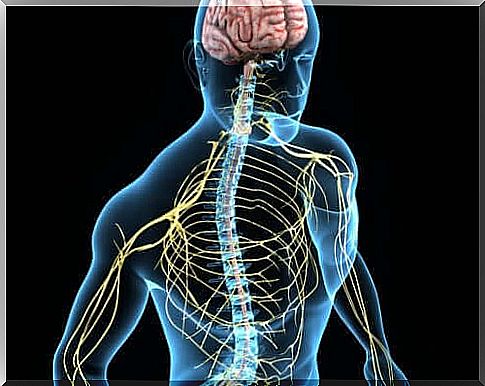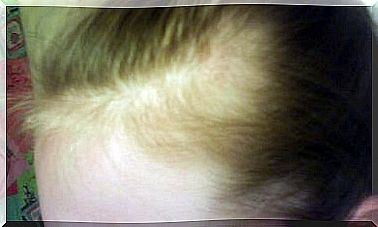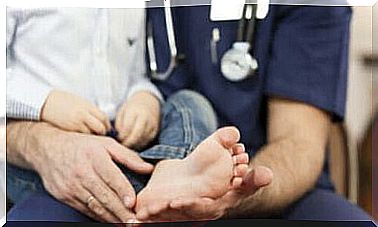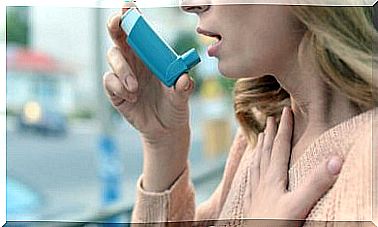Essential Tremor: Symptoms, Causes, And Treatments

Essential tremor is common in the general population. In fact, it is the most common movement disorder, much more common than Parkinson’s disease. Statistically, it is 20 times more common than Parkinson’s disease in adults.
In general, the disease is most common in people over sixty-five. However, experts believe that the most common age of onset of symptoms is between the ages of 40 and 60. However, there are also cases of babies being affected by this condition.
Essential tremor is characterized by involuntary movements that manifest as persistent tremors. The tremors mainly occur in the upper limbs: hands and arms.
The episodes usually occur symmetrically and with pauses. It is a chronic situation that continues over time. However, it does not manifest itself throughout the day and sometimes not even every day.
Essential tremor is not life-threatening and is not associated with cognitive impairment or degeneration of the nervous system. Although it is considered benign, it is very annoying.
After all, this condition also affects the performance of the patient’s daily tasks. This includes, for example, writing, drinking a cup of tea or tying shoelaces.
Causes of Essential Tremor
There are not enough scientific studies on the condition to determine the cause of the disease. This is because it is a benign condition that progresses slowly.
However, it is known that essential tremor is a change in the connections of the nervous system in the locomotion nuclei. The thalamus, the nigrostriatal tract, and the cerebellum are the parts of the nervous system responsible for regulating body movements.
The scientific hypothesis is that some of these regions undergo an abnormal change due to essential tremor, eventually causing involuntary movements.

There are cases where parents and children suffer from essential tremor, which primarily indicates a genetic component of the condition. This condition is sometimes known as “family tremor.”
Symptoms of Essential Tremor
First, it is important to distinguish this condition from Parkinson’s. The main feature of this condition is that the involuntary movements happen when the person performs a certain movement or tries to assume a certain position. In Parkinson’s, the involuntary movements also occur at rest.
In addition to this important symptom, trembling of the upper limbs, there are the other symptoms of the condition:
- Changes in the voice. Essential tremor can affect the larynx, altering how the vocal cords work.
- Head movements. This is as if the person is saying “yes” or “no” with their head. However, it is involuntary.
- Difficulty in performing daily activities. Sometimes the vibrations are not obvious, but the person still notices that they have trouble grasping things, using a tool, or writing.
If left untreated, the symptoms worsen as the person ages. Symptoms have also been shown to worsen and recur when a person consumes a lot of caffeine. This also happens in stressful situations or after a bad night’s sleep.

Treatment methods
First of all, we must point out that there is no cure for essential tremor. Doctors generally advise you to stop consuming caffeine. Also, medical experts recommend various measures that relieve stress, such as psychotherapy or sleeping pills.
In addition, some patients benefit from physiotherapy and physiotherapy, which aim to improve muscle control, coordination and balance.
Doctors can also prescribe medications. Here are the most commonly used drugs for which there is the most scientific evidence:
- propranolol. This is a beta blocker. This is arguably the most effective in reducing symptoms. However, patients with heart disease should be careful when taking this drug. It should only be used under professional supervision.
- Primidone. This is an anticonvulsant.
- Antidepressants. Sometimes doctors recommend these to control the stress that the condition can cause.
- Anxiolytics. These can help manage stress and regularize sleep.
- botulinum toxin. Sometimes doctors recommend this in injectable doses in certain areas of the body. Usually these are the head and hands.
Advice
Finally, if the above treatments don’t work, medical professionals can point to more complex treatments. However, they reserve it for patients with a very low drug response and an invalid clinical picture.
Overall, there are some other therapeutic last resorts:
- Stereotactic radiosurgery. This uses a powerful radiation that is aimed at a specific area of the nervous system.
- HIFU. This is the same as the above technique. However, it uses non-ionizing ultrasonic waves.
- Stimulator implant. For this, medical professionals place a device that sends electrical impulses to the thalamus.
- Thalamotomy. This consists of surgically opening parts of the thalamus.
Today, medical experts no longer resort to traditional techniques. Instead, they usually opt for radiosurgery or HIFU, which prevents invasive surgery.









